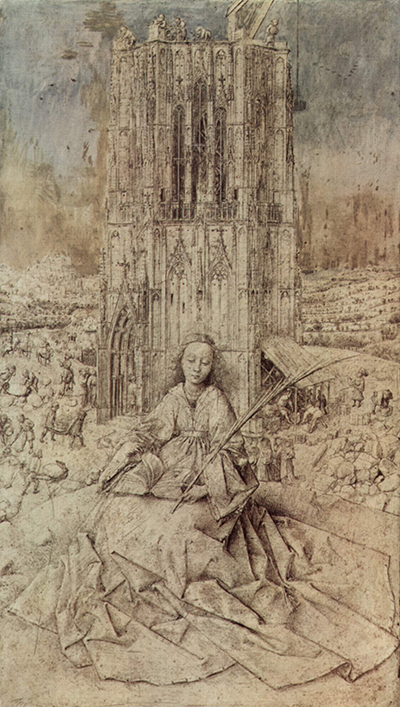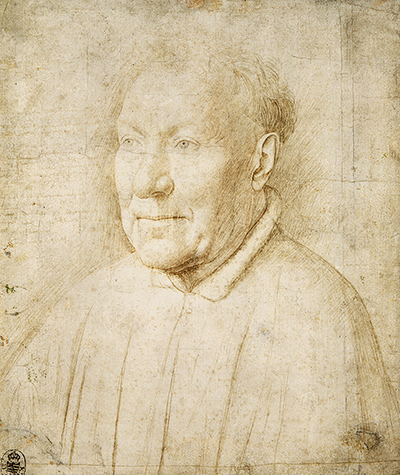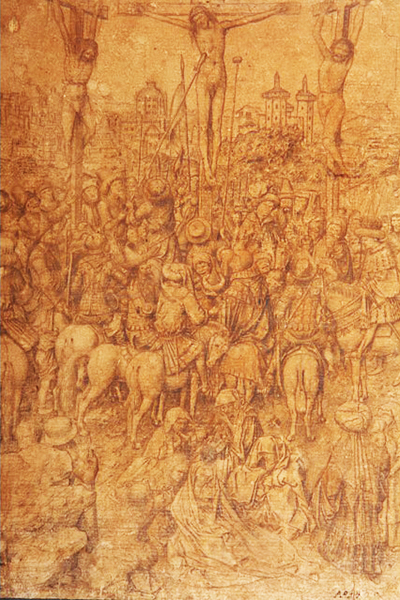Despite being highly significant to his oeuvre, there is no single resource from which to study Jan van Eyck's drawings, with very few still attributed to the artist.
Such is the nature of this fragile medium that most work in this medium from around the Renaissance has since been lost or damaged beyond repair. Many artists would also see such work as study pieces, not something to worry about preserving or presenting. Only some would see drawings as individual artworks in their own right rather than just a supporting piece to a larger fresco. It is only down to the exceptional interest in the artist that remains today that any drawings remain at all. Indeed, all these years later we occassionally find newly discovered drawings being attributed to the label of Van Eyck and his studio. To be any more accurate in the present day would be exceptionally difficult. Within the Northern Renaissance it was perhaps Albrecht Durer who was the first artist to understand the importance of drawing and would preserve them far more carefully than artists of previous generations.
In fact he would even collect drawings by artists he admired, something never seen during the time of Jan van Eyck. Within Van Eyck's early period drawings would be passed around studios as a means of instructing and inspiring others. Individual items of attention could be examined but the fragile pieces would slowly becoming damaged and ultimately discarded. Van Eyck is therefore typical in not having many left that can be attributed to him confidently, such were the times. We do know that we often produced drawings as preparation for later paintings and these would also be used by other members of his studio as a means to supervising and leading their own work. He used assistants to complete some parts of his compositions so that he could also work across different projects at the same time, just as many other notable artists have done across the Renaissance and Baroque periods.
There are only three surviving drawings from Jan van Eyck's career, each of which are featured within this section. There are likely to have been very many more which simply did not last the passage of time, partly due to the very fragile nature of paper. They would also not have received the same care as his drawings because of their supporting role in helping prepare for later paintings, rather than being seen as genuine artworks for public consumption in their own right. He would hand some around to his colleagues in order to lead their work and for them to be in and around a busy studio, it is inevitable that damage would have been sustained sooner rather than later. Some of his paintings were exceptionally detailed and this required proper planning prior to starting the final artwork, which was also beneficial if others would help finish off some of the less significant parts of the composition.
Van Eyck studied several publications during his lifetime in order to better understand the theories around different artistic mediums. One such author taught him that the creation of outline drawing was just an initial stage, after which painting would naturally follow. That would also become the way in which he worked himself, choosing to concentrate on line initially before then starting to consider the precise colour choices that came about with the painting stage. There was a scarcity in some colours at this time and so Van Eyck would have to adapt to whatever was available at the time. There would never be any problem in producing his various drawings, though, and this art form was more understood and established at that time. Most European countries considered sketching to be a fundamental skill for any artist, even if they actually specialised in sculpture or painting. One would first be taught the methods of a draughtsman before these other mediums would even be mentioned.
One of Van Eyck's biggest attributes was his ability to accurately capture the natural world. This would have come from his knowledge of drawing these various elements, before then adding his techniques of oil painting as they developed over time. There have been very few to have captured nature as well as Van Eyck, with some examples being specialist genres such as Pisanello's birds, and Durer's plants. Van Eyck was able to work close to this level across a much wider selection of topics, underlining his genius but also the ability that he had to observe everything around him and take in every last detail before recreating on paper or panel. We know from historians closer to his period that he liked to essentially paint from life, and that these depictions would first start from simple sketches, concentrating on detail of each living organism prior to concerning himself about colour and shade.






